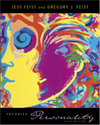
Psychodynamic Theories Sullivan: Interpersonal Theory |  |
Chapter Objectives
| 1. Discuss specific ways in which Sullivan’s early experiences, especially during preadolescence, may have influenced his theory of personality. |
| 2. Compare and contrast tensions of needs and tensions of anxiety. |
| 3. Give examples of how the malevolent dynamism may affect a young child. |
| 4. Distinguish between Sullivan’s concepts of intimacy and lust. |
| 5. Identify the major dynamisms of Sullivanian theory. |
| 6. List and describe the basic personifications of interpersonal theory. |
| 7. Name and define the three modes of cognition described by Sullivan. |
| 8. Discuss the importance of anxiety in Sullivan’s theory of personality. |
| 9. List the Sullivanian epochs and describe their characteristics. |
| 10. Explain the process of psychotherapy from the perspective of interpersonal theory. |
|
|